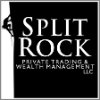by Michael Tarsala
What’s special about the new investment managers coming to the Covestor platform?
Their deep domain expertise.
Technology
 Take Kris Tuttle. If you’re into tech, you may know his name.
Take Kris Tuttle. If you’re into tech, you may know his name.
He’s founder and director of research at SoundView Investments, and former Director of Research at SoundView Technology Group, one of the most respected investment banking and research firms in its day.
Kris knows the technology industry from lots of angles — as an investor, an investment researcher, a former programmer, and from the R&D side. He is in deep with tech businesses, as well as their underlying technologies.
Better yet, the heavy hitters in the industry know Kris.
Check out his LinkedIn page. It details his 30 years of experience in the industry, including his work running his own research boutique.
Now Kris and his partner Stephen Waite, with 25 years of Wall Street experience, are teaming up to offer their SoundView Technology investment model on the Covestor platform, with just a $10,000 minimum and a 1.5% fee.
Investments are based on top-down research on trends (see the latest on nanotechnology) and bottom-up research on individual companies — and also incorporates both fundamental and technical disciplines.
Shale
— Tyler Kocon at Split Rock Private Trading is now running a shale model on the Covestor platform.

He’s run a shale portfolio for Split Rock since January 2010 — not nearly as long as Tuttle’s industry experience. Keep in mind, though, an oil shale development program in the U.S. was started less than a decade ago. And investment opportunities have arisen only in recent years.
The model focuses mostly on opportunities in the Bakken formation in North Dakota, Montana and Saskatchewan, the largest domestic oil discovery since Alaska’s Prudhoe Bay. While there are many oil and gas funds, there are few investments that I know about that specifically seek significant exposure to the Bakken formation and other U.S. shale deposits. The Market Vectors Unconventional Oil & Gas ETF (FRAK) made its debut in February, although it also includes investments in coalbed methane, coal seam gas, tight natural gas, tight oil and tight sands.
Here’s Tyler’s take:
Shale deposits like the Marcellus/Utica, Eagle Ford, and Haynesville present incredible opportunity for energy investment. We realized that while the Bakken can be the focus, it cannot be the only locale. There is simply too much opportunity to ignore.
The Bakken and U.S. Energy Shale model is an effort to encapsulate the wide array of operating companies participating in unconventional shale gas and oil plays.
Companies in this line of business can be broken down into roughly three distinct operational structures: There are companies that explore for and extract oil and hydrocarbon deposits from the shale, companies that provide specialized services to these companies including waste water removal, well finishing and capping, and mobile housing for work crews, and there are companies that specialize in the transport and compression of natural gas and oil liquids.
Portfolio construction expert
Matthew Pierce is a domain expert in creating investment portfolios.
He’s the owner of Island Light Capital, which mostly works with institutional investors to develop new asset allocations and strategies. So he knows quite a bit about creating investment models incorporating his deep experience and quantitative techniques.
And he’s built an income-oriented model for Covestor designed for the long haul.
From Matthew:
Island Light’s Global ETF Portfolios are optimally diversified across major asset classes of fixed income, global equity and real assets. We combine state-of-the-art investment technology and current financial and economic information to develop three investment portfolios suitable for long term investors. This is our most conservative, Income Portfolio.
If you want to know more about our managers, contact us. You can also check out my interview with Covestor’s Eric Esterkin, our Director of Corporate Development, for more details.
